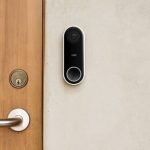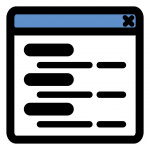How To Schedule Wellness Into Your Workday And Still Get Stuff Done
Wellness is a thing most people only think about when they’re suddenly unwell. I bet you’ve experienced more than one morning when you couldn’t get out of bed and swore to yourself that you’ll “do better” in taking care of yourself from now on.
Unfortunately, those sickbed declarations don’t actually stick unless you have a game plan to live a healthier life every day. Lucky for you, I’m a wellness expert, and I’ve crafted the perfect 24-hour routine for you to try if you want to feel more energetic, more productive, and healthier:
6 A.M.: Get Up
Rise and shine! As in, sunshine. If it’s available, get some daylight first thing in the morning. (If it’s not light out when you wake up, try a light therapy alarm.)
6:15 A.M.: Get Thankful
Pick two or three things, big or small, for which to be thankful for—you’d be surprised to find that this activity cancels out most of your anxieties about starting the day.
6:30 A.M.: Get Moving
Do a bit of exercise, like some light yoga or a more ambitious activity to get the blood moving. Then, fuel yourself up. A protein shake, oatmeal, Greek yogurt, or eggs (hard-boiled is best when you’re on the go) will carry you until lunch.
8 A.M.: Get Going
Use your commute as a chance to catch up on your favorite podcasts, news programs, or audio books–better yet, try unfamiliar ones to learn something new and help keep your mind fresh.
If your road to work is more of a stressful journey (i.e., full of cranky commuters who didn’t start the day as wellness-conscious as you did), a better use of this time might be found in distilling your day’s to-do list (Drivers: Tell it to your phone), or reciting an upcoming presentation to yourself (if you’re commuting alone, or with understanding carpool partners).
9 A.M.: Get To Work
You’ve made it to work. Now what? Three words: prioritize, prioritize, prioritize.
Organize your workflow for the day to avoid feeling overwhelmed and wasting the positive energy you’ve already cultivated for the morning. Once you’ve laid out your to-do list, get to work–which means shutting off your phone and logging out of your email and social media. If anything, at least try going into “do not disturb” mode for 90-minute blocks.
12 P.M.: Get Refueled
Use your lunchtime (no matter how limited it may be) to refuel not only your body but also your mind: Pick up with your listening or reading materials you left off during the morning commute, or squeeze in a fast meditation session (such as this one) or a quick desk exercise. Or, if you’re an extrovert, spend that time interacting with colleagues—it’ll boost your energy levels even more.
At the very least, if you’re eating at your computer, deep into work, make sure your lunch involves healthy foods, such as an entrée salad, a lean-meat wrap, or even a good old peanut butter and jelly sandwich (on whole-wheat bread, of course).
3 P.M.: Get Through
The late-afternoon slump is all too real, but there’s no reason to give into it. Instead of reaching for a sugary snack or an energy drink, take a break and go for a stroll, even if it’s just around the office. If your cravings are simply too strong, make sure to stick with complex carbohydrates and lean proteins; complex carbs promote sustained release of energy, while lean proteins help boost alertness levels. Think whole-wheat crackers with cheese, fruit (fresh or dried), trail mix, or raw veggies with hummus.
6 P.M.: Get Out
The workday is over, so leave your work at work. Now’s the time to begin winding down, which means something different for everyone. If you’re not into morning workouts, you can just as easily hit the gym or take a long walk with your dog. Socializing is also a great relaxer—they don’t call it “happy hour” for nothing. Whatever it takes to get yourself out of the work headspace, embrace it.
7 P.M.: Get Dinner
Settle in for dinner–and don’t wait too long. It’s best to eat at least three hours before bedtime, otherwise you’ll be digesting when you should be sleeping. Avoid high-fat and high-carb meals in favor of foods that promote better sleep, such as salmon, whole grains, yogurt, and bananas. You may feel drowsy after scarfing down a loaded pizza or a triple cheeseburger, but a restless “food coma” is no substitute for quality slumber. Also, don’t drink too much, for all the reasons you already know.
9 P.M.: Get Relaxed
Meditation, a warm bath, a cup of sleep-friendly tea, or just a good book are all relaxing ways to get ready for bed.
A murder-documentary marathon or last-minute perusal of tomorrow’s spreadsheets? Not so much. The blue light that emits from your electronics–while unnoticeable–tells the brain to stop producing melatonin (a natural sleep-inducing chemical) and disrupts circadian rhythms, so shut them down. If you can’t put down your screen, try using an app or the built-in iPhone setting that turns down that light.
10 P.M.: Get To Sleep
Daily stress can still impede sleep, no matter how mindfully you work to keep it away at night. Still, the little things can help, like turning your LED alarm clock to the wall (again, because of the blue light), and keeping the bedroom cool (around 65 degrees) and dark (absence of light helps with melatonin levels). Most of all, don’t think about sleeping, just breathe. If you can’t fall asleep, try some relaxing music or white noise, writing in a journal, or working on a boring, small task you’ve been putting off.
At first, you may only be able to do one or two of these steps a day–that’s okay! Once you gradually incorporate healthy habits into your routine, they’ll start to feel natural, if not necessary, to get through the day.
This article originally appeared on The Daily Muse and is reprinted with permission.
Fast Company , Read Full Story
(42)














